Tuberculosis: From an incurable scourge to a curable disease - journey over a millennium
- PMID: 23640554
- PMCID: PMC3705655
Tuberculosis: From an incurable scourge to a curable disease - journey over a millennium
Abstract
Globally, tuberculosis (TB) still remains a major public health problem. India is a high TB burden country contributing to 26 per cent of global TB burden. During 1944-1980, TB became treatable and short-course chemotherapy emerged as the standard of care. When TB elimination seemed possible in the early 1980s, global human immunodeficiency virus (HIV) infection/acquired immunodeficiency syndrome (AIDS) pandemic resulted in a resurgence of TB. Widespread occurrence of multidrug-resistant and extensively drug-resistant TB (M/XDR-TB) is threatening to destabilize TB control globally. Atypical clinical presentation still poses a challenge. Disseminated, miliary and cryptic TB are being increasingly recognized. Availability of newer imaging modalities has allowed more efficient localization of lesions and use of image guided procedures has facilitated definitive diagnosis of extrapulmonary TB. Introduction of liquid culture, rapid drug-susceptibility testing (DST), molecular diagnostic methods has helped in rapid detection, speciation and DST profiling of Mycobacterium tuberculosis isolates. While treatment of TB and HIV-TB co-infection has become simpler, efforts are on to shorten the treatment duration. However, drug toxicities and drug-drug interactions still constitute a significant challenge. Recently, there has been better understanding of anti-TB drug-induced hepatotoxicity and its frequent confounding by viral hepatitis, especially, in resource-constrained settings; and immune reconstitution inflammatory syndrome (IRIS) in HIV-TB. Quest for newer biomarkers for predicting a durable cure, relapse, discovery/repurposing of newer anti-TB drugs, development of newer vaccines continues to achieve the goal of eliminating TB altogether by 2050.
Figures
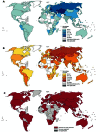
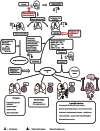

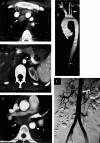

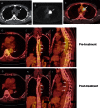
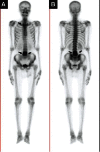
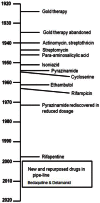



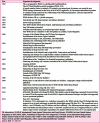
Similar articles
-
Management of drug resistantTB in patients with HIV co-infection.Expert Opin Pharmacother. 2015;16(18):2737-50. doi: 10.1517/14656566.2015.1100169. Epub 2015 Oct 19. Expert Opin Pharmacother. 2015. PMID: 26478945 Review.
-
HIV coinfection among multidrug resistant and extensively drug resistant tuberculosis patients--a trend.J Indian Med Assoc. 2009 May;107(5):281-2, 284-6. J Indian Med Assoc. 2009. PMID: 19886382
-
Prevalence of multidrug resistance in Mycobacterium tuberculosis isolates from HIV seropositive and seronegative patients with pulmonary tuberculosis in north India.BMC Infect Dis. 2013 Mar 15;13:137. doi: 10.1186/1471-2334-13-137. BMC Infect Dis. 2013. PMID: 23497169 Free PMC article.
-
Global trends, regional differences and age distribution for the incidence of HIV and tuberculosis co-infection from 1990 to 2019: results from the global burden of disease study 2019.Infect Dis (Lond). 2022 Nov;54(11):773-783. doi: 10.1080/23744235.2022.2092647. Epub 2022 Jul 7. Infect Dis (Lond). 2022. PMID: 35801264
-
The cursed duet today: Tuberculosis and HIV-coinfection.Presse Med. 2017 Mar;46(2 Pt 2):e23-e39. doi: 10.1016/j.lpm.2017.01.017. Epub 2017 Feb 28. Presse Med. 2017. PMID: 28256380 Review.
Cited by
-
Trends of Private Drugs' Sales and Costs Incurred by Patients on Anti-tuberculosis Drugs in Selected Districts of Jharkhand (2022): Results From Sub-national TB-Free Certification.Cureus. 2023 Oct 18;15(10):e47296. doi: 10.7759/cureus.47296. eCollection 2023 Oct. Cureus. 2023. PMID: 38021489 Free PMC article.
-
An Outcome-Based Follow-up Study of Cured Category I Pulmonary Tuberculosis Adult Cases from Various Tuberculosis Units under Revised National Tuberculosis Control Program from a Western Indian City.Indian J Community Med. 2019 Jan-Mar;44(1):48-52. doi: 10.4103/ijcm.IJCM_310_18. Indian J Community Med. 2019. PMID: 30983714 Free PMC article.
-
The role of laboratory investigations in evaluating abdominal tuberculosis.J Family Community Med. 2015 Sep-Dec;22(3):152-7. doi: 10.4103/2230-8229.163029. J Family Community Med. 2015. PMID: 26392795 Free PMC article.
-
Respiratory tract clinical sample selection for microbiota analysis in patients with pulmonary tuberculosis.Microbiome. 2014 Aug 25;2:29. doi: 10.1186/2049-2618-2-29. eCollection 2014. Microbiome. 2014. PMID: 25225609 Free PMC article.
-
Immunogenicity and safety of early vs delayed BCG vaccination in moderately preterm (31-33 weeks) infants.Hum Vaccin Immunother. 2015;11(12):2864-71. doi: 10.1080/21645515.2015.1074361. Hum Vaccin Immunother. 2015. PMID: 26431252 Free PMC article.
References
-
- Mohan A, Sharma SK. History. In: Sharma SK, Mohan A, editors. Tuberculosis. 2nd ed. New Delhi: Jaypee Brothers Medical Publishers; 2009. pp. 7–15.
-
- Rubin SA. Tuberculosis. Captain of all these men of death. Radiol Clin North Am. 1995;33:619–39. - PubMed
-
- Dubos R, Dubos J. Boston: Little, Brown and Company; 1952. The white plague. Tuberculosis, man and society.
-
- Waksman SA. Berkeley and Los Angeles: University of California Press; 1964. The conquest of tuberculosis.
Publication types
MeSH terms
Substances
LinkOut - more resources
Full Text Sources
Medical
